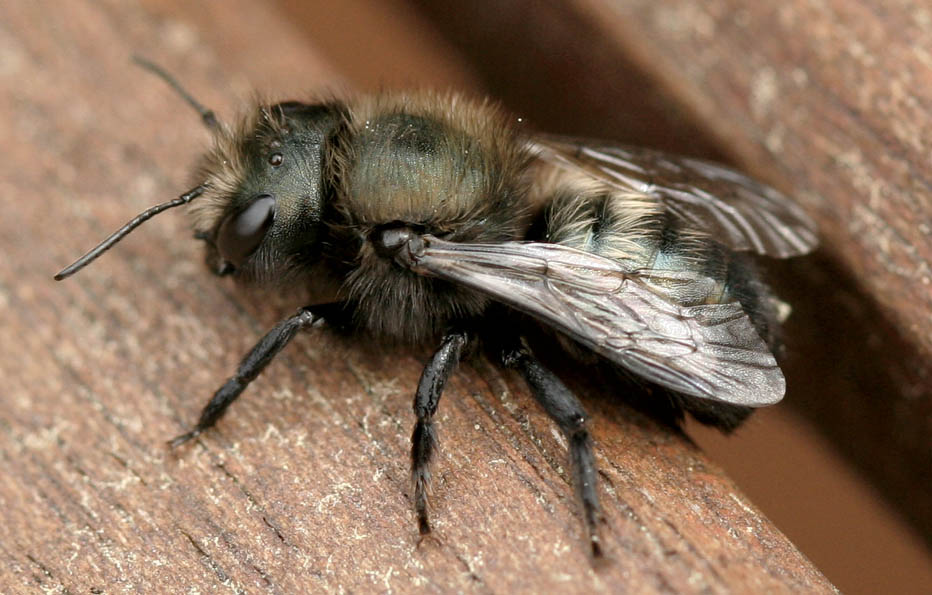THE NAME GAME
Look in a field guide to butterflies, grasshoppers, or dragonflies, and every species will have a common name. This is not the case for bees. Most lack a common name, and some names are applied to dozens of species — and other bees have multiple common names! Obviously, this can lead to confusion. It also means there is a greater reliance on scientific names with bees than other groups of commonly studied animals.
Each bee has a two-part name comprising a genus name (describing a group of closely related bees) and a species name (describing one particular type of bee). This genus-species combination forms the scientific name, called a binomial, which is unique for each species. It is not used for any other living organism. The genus and species names are at the bottom of a hierarchical naming system that starts with the broadest category of kingdom and becomes increasingly restrictive down through phylum, class, order, and family to genus and species (and eventually subspecies in some cases). There are also further subdivisions within these categories, such as superfamily, tribe, and subgenus.
Not only is the naming system standard, but the way the names are written also follows certain rules. All names except the species and subspecies begin with a capital letter, and all but genus, species, and subspecies are written in normal type. The genus, species, and subspecies are written in italics (or underlined, if italics are not possible, for example, in handwritten notes in a nature journal).
When discussing bees, the genus and species are the most frequently used names. Family names are also commonly used to describe groups of bees. In these situations, rather than referring to the Megachilidae family of bees, for example, they are called megachilids.
Scientific names can be confusing, even a little scary, and everyone who uses them has stumbled over pronunciation. However, they are an essential part of the study of bees and you will quickly get used to them. To help you become fluent, each genus profile includes a guide to pronunciation of the scientific name. (These pronunciations are based on a guide produced by Sam Droege of the U.S. Geological Survey Patuxent Wildlife Research Center.) After all, if gardeners can talk with ease of chrysanthemums and bougainvillea, why should bee enthusiasts shy away from using Anthophora or Ceratina?
CLASS SYSTEM
To illustrate the naming system, here’s the classification for the blue orchard bee, Osmia lignaria:
KINGDOM: |
Animalia (animals) |
PHYLUM: |
Arthropoda (arthropods) |
CLASS: |
Insecta (insects) |
ORDER: |
Hymenoptera (bees, wasps, ants, and sawflies) |
FAMILY: |
Megachilidae (leafcutter bees) |
TRIBE: |
Osmiini (mason bees) |
GENUS: |
Osmia (mason bees) |
SPECIES: |
lignaria (blue orchard bee or orchard mason bee) |
SUBSPECIES: |
lignaria (in the eastern states) or propinqua (in the western states) |
